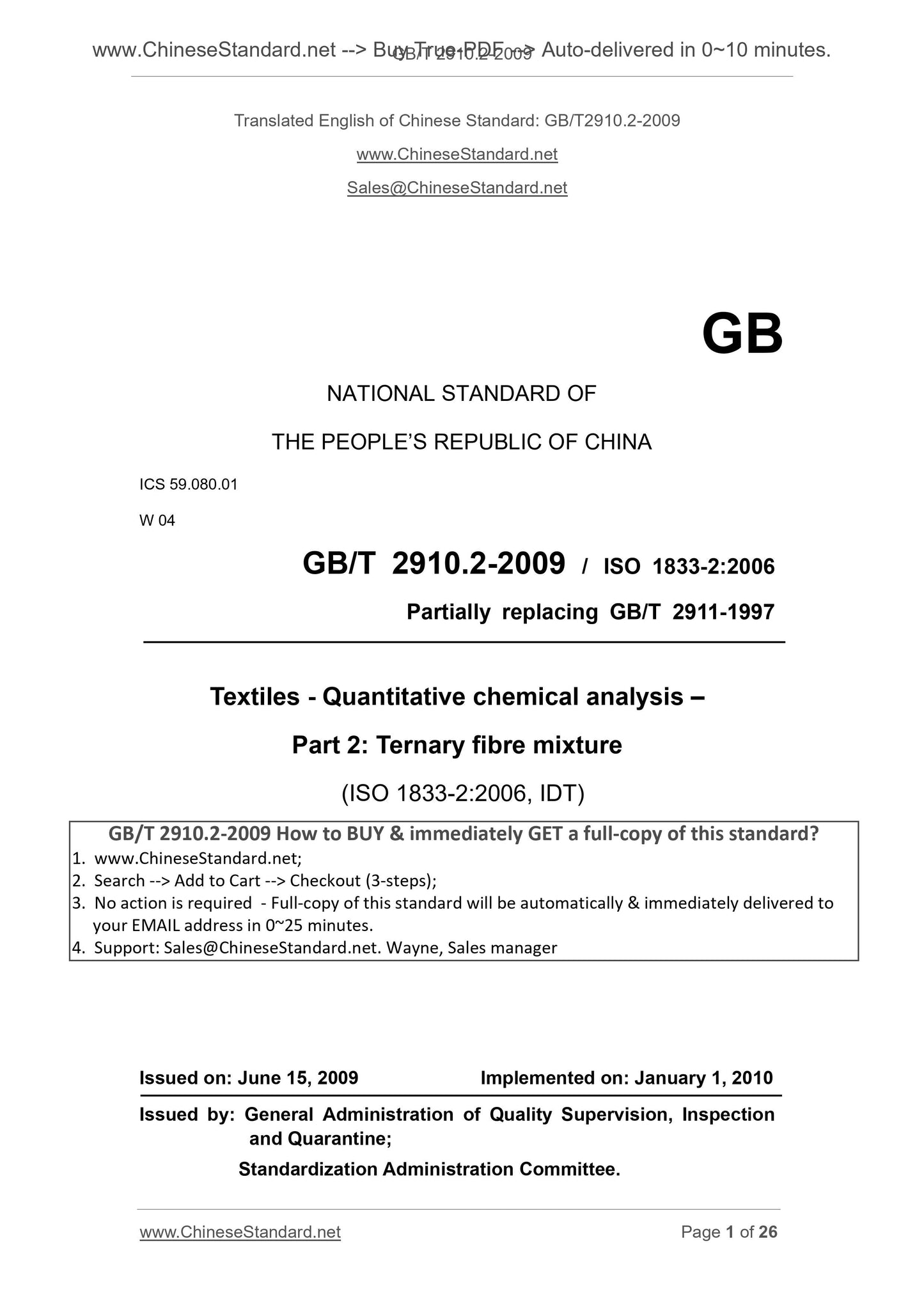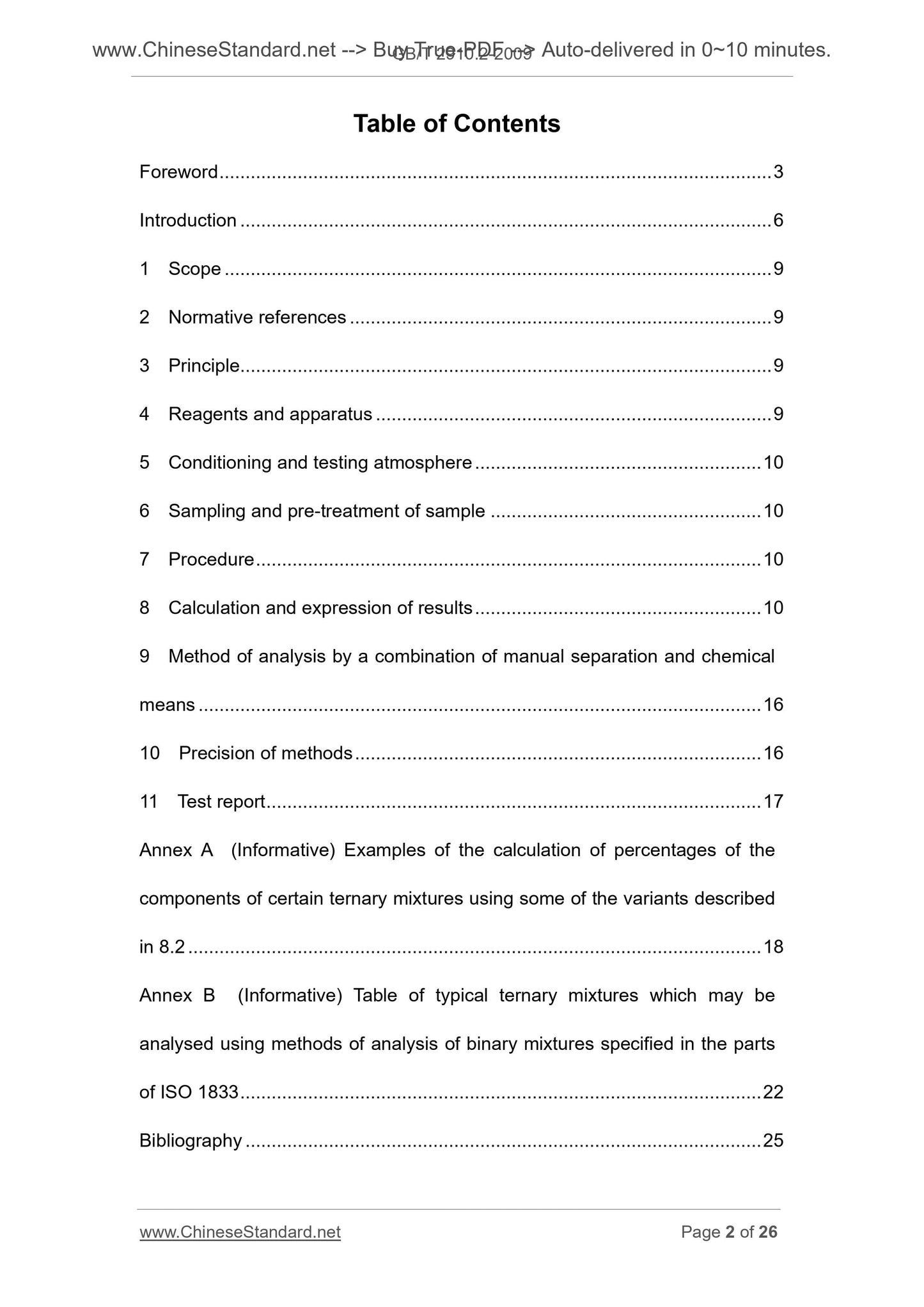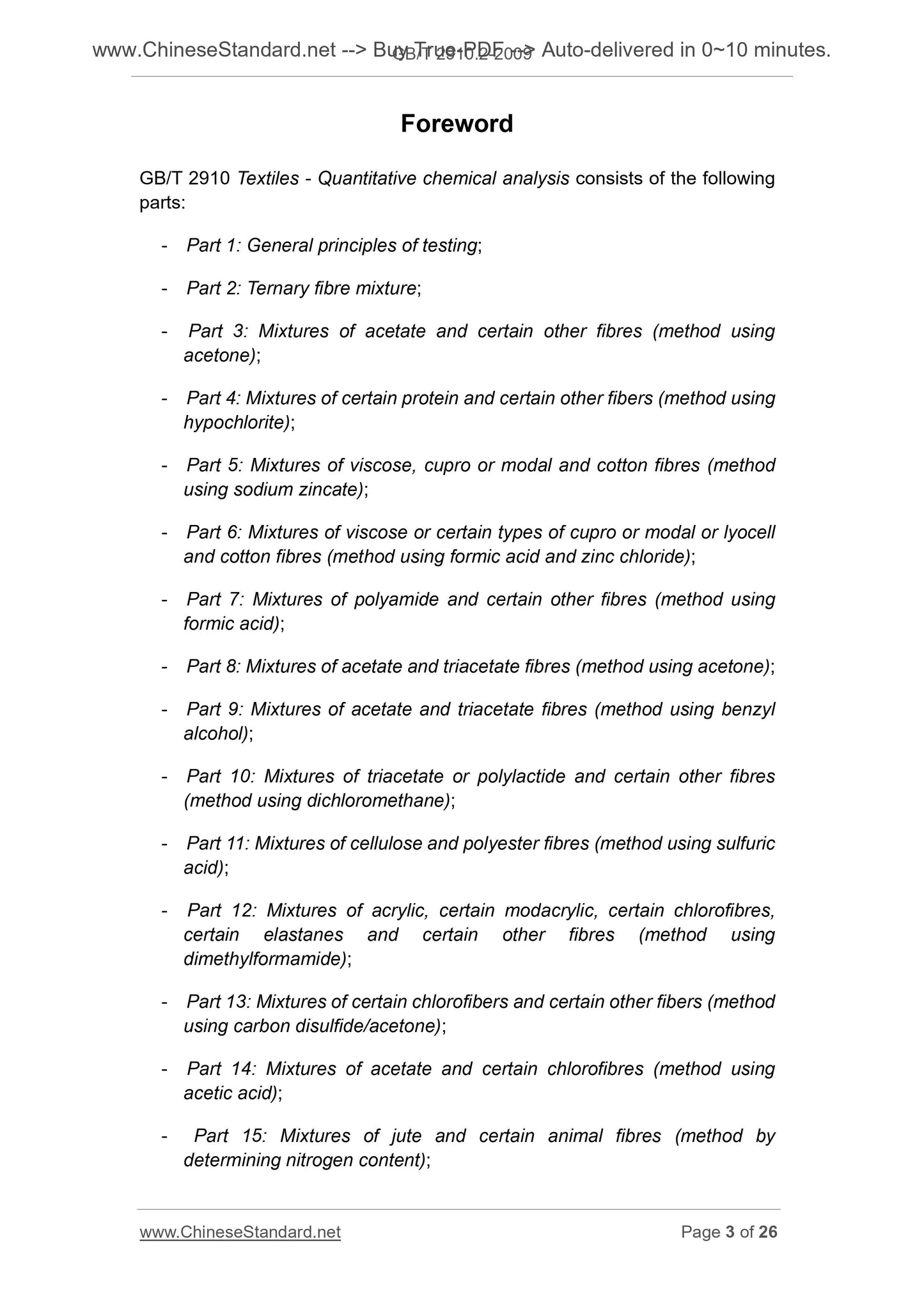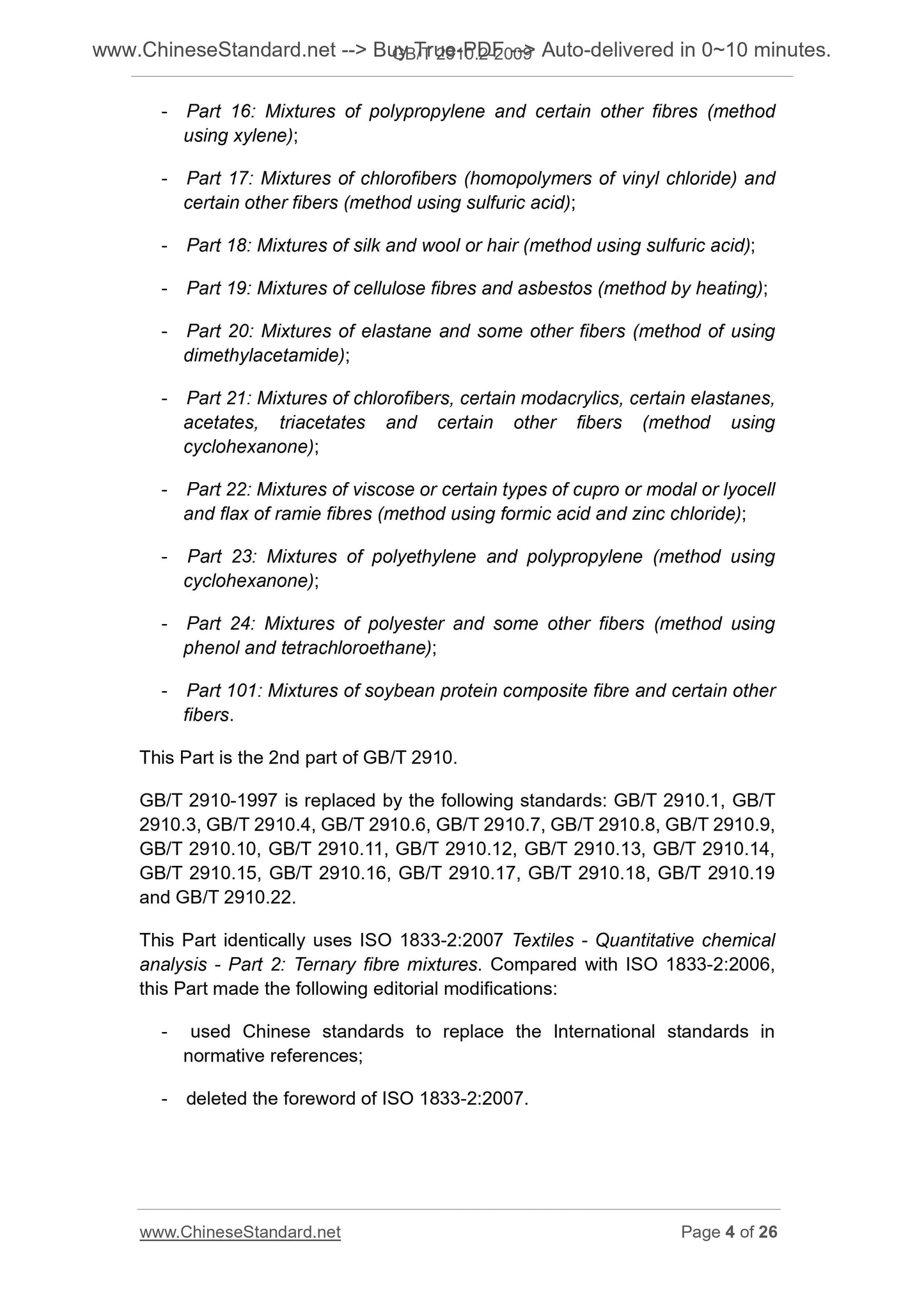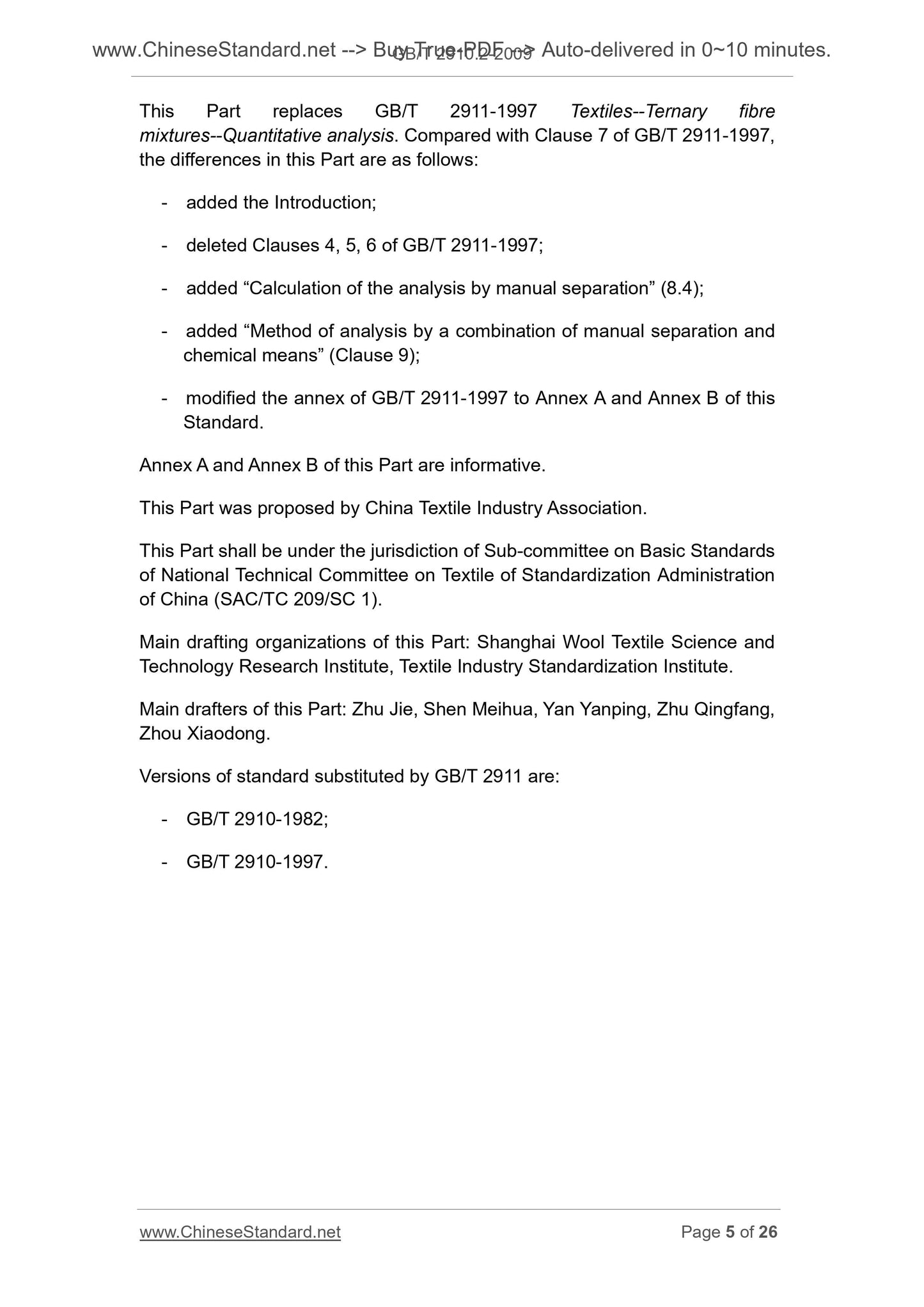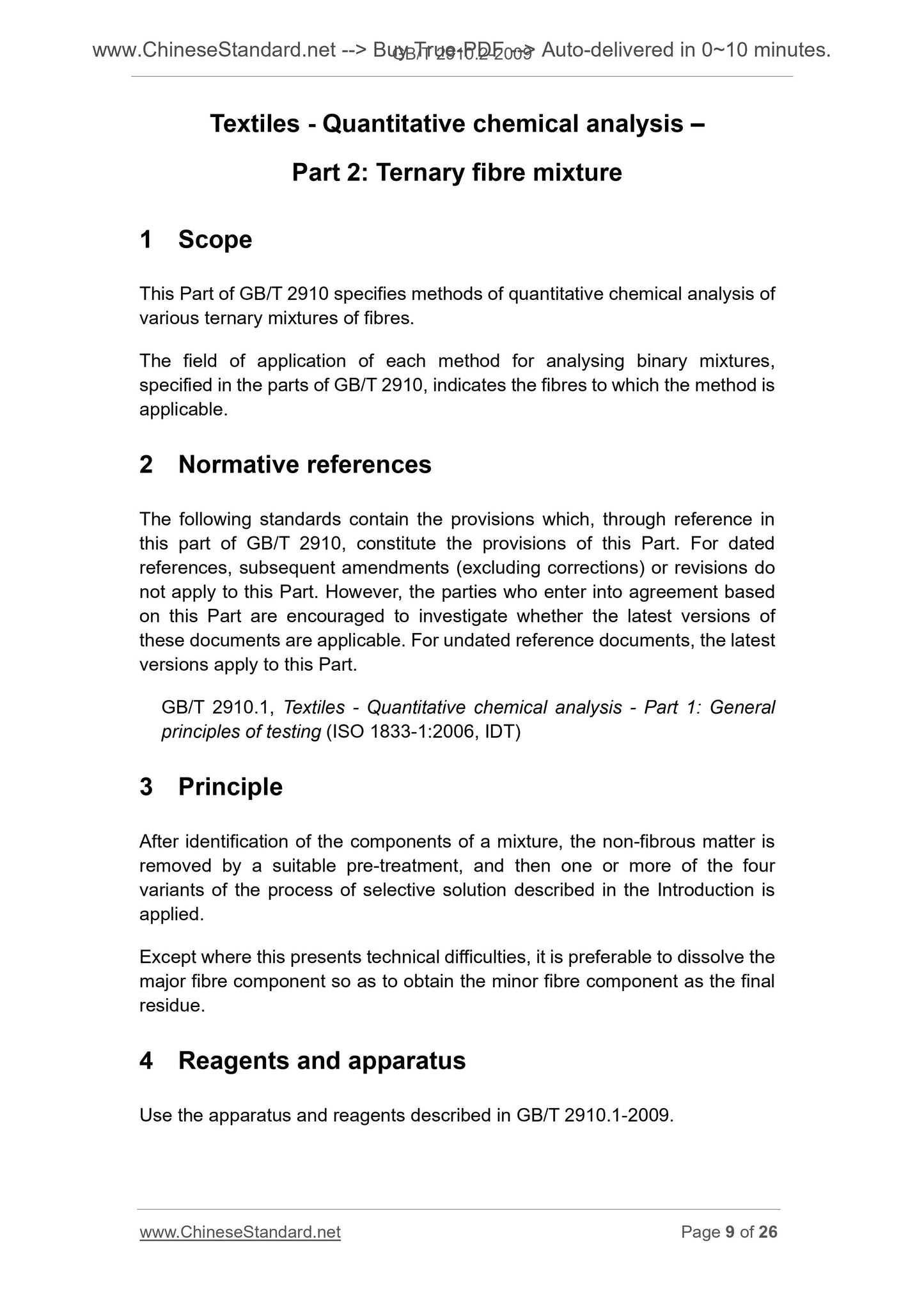1
/
of
6
www.ChineseStandard.us -- Field Test Asia Pte. Ltd.
GB/T 2910.2-2009 English PDF (GB/T2910.2-2009)
GB/T 2910.2-2009 English PDF (GB/T2910.2-2009)
Regular price
$85.00
Regular price
Sale price
$85.00
Unit price
/
per
Shipping calculated at checkout.
Couldn't load pickup availability
GB/T 2910.2-2009: Textiles -- Quantitative chemical analysis -- Part 2: Ternary fibre mixture
Delivery: 9 seconds. Download (and Email) true-PDF + Invoice.Get Quotation: Click GB/T 2910.2-2009 (Self-service in 1-minute)
Newer / historical versions: GB/T 2910.2-2009
Preview True-PDF
Scope
This Part of GB/T 2910 specifies methods of quantitative chemical analysis ofvarious ternary mixtures of fibres.
The field of application of each method for analysing binary mixtures,
specified in the parts of GB/T 2910, indicates the fibres to which the method is
applicable.
Basic Data
| Standard ID | GB/T 2910.2-2009 (GB/T2910.2-2009) |
| Description (Translated English) | Textiles -- Quantitative chemical analysis -- Part 2: Ternary fibre mixture |
| Sector / Industry | National Standard (Recommended) |
| Classification of Chinese Standard | W04 |
| Classification of International Standard | 59.080.01 |
| Word Count Estimation | 17,133 |
| Date of Issue | 2009-06-15 |
| Date of Implementation | 2010-01-01 |
| Older Standard (superseded by this standard) | GB/T 2911-1997 |
| Quoted Standard | GB/T 2910.1-2009 |
| Adopted Standard | ISO 1833-2-2006, IDT |
| Regulation (derived from) | National Standard Approval Announcement 2009 No.8 (Total No.148) |
| Issuing agency(ies) | General Administration of Quality Supervision, Inspection and Quarantine of the People's Republic of China, Standardization Administration of the People's Republic of China |
| Summary | This standard specifies the method for the quantitative chemical analysis of three -component fiber mixture. Applications Two -component mixture analysis method in GB/T 2910 in various parts of the existing provisions, it pointed out the method applicable to various fibers. |
Share
